5 Insights From Amish Bishop Monroe Yoder
Monroe Yoder is an Amish bishop in the Shipshewana area of northern Indiana. In 2018, he invited a tour group into his home and spent time answering their questions, along with his wife Susie.
This was written up on a blog called Midwest Wanderer by someone who attended the occasion. The post was just brought to my attention by a relative of Monroe.
I pulled five interesting things from what Monroe shared about his community, and the Amish in general. Monroe and Susie are actually joined by two other friends. I also added some of my own comments.
If you like this type of post, we’ve got several others in this “5 insights” series – see John Gingerich (Indiana), Reuben Mast (Illinois), and Sam Shetler (Missouri Swartzentruber) – but this is the first from a bishop.
5 Insights From Amish Bishop Monroe Yoder
1. Church service in northern Indiana is rarely held in homes – In this community at least, church service in the actual home is not common. The Amish here usually use utility buildings and workshops for their church gatherings.
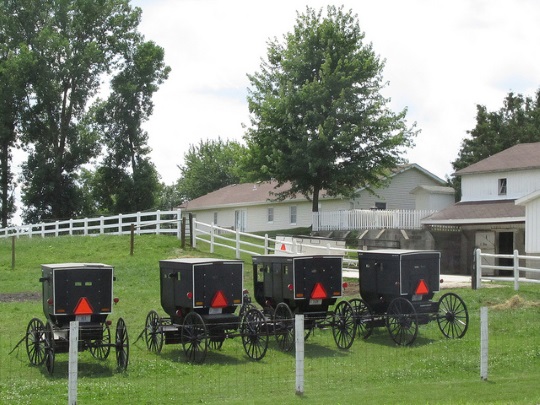
The one time I attended church in northern Indiana, this was my experience. I’ve found that to be similar on multiple occasions in Holmes County.
However, the services I’ve attended in Lancaster County have tended to more often be held within a room of the home, often the basement or a large main room.
I don’t know if that reflects size of home or cultural trend or if my sample size would need to be bigger to draw any firm conclusions. Anyway, that’s been my experience.
Another detail – how do Amish know where services in each district will be held?
You would probably easily know where your own district is holding service, but what about if you want to visit another part of the (now 190+ district) settlement?
A bi-weekly paper gives this information along with the scripture readings. An example of this paper in another community is Holmes County’s Gemeinde Register.
2. Five dozen cooks at weddings – Monroe’s friend Irvin says that at the last wedding they attended, 60 cooks were needed to prepare food. This is because weddings can have over 1000 guests. This seems large to me, but maybe that is the way of things in northern Indiana.

Amish weddings typically see guests that come for different lengths of time. Some might be there all day and some just for part of the event. You may have more than one wedding to attend on a given day particularly in places which still stick more closely to a seasonal wedding schedule, like Lancaster County.
3. Page 770 – What is the significance of page 770? This is where the Amish place the piece of paper inside the Ausbund hymnal when selecting a new minister by lot.
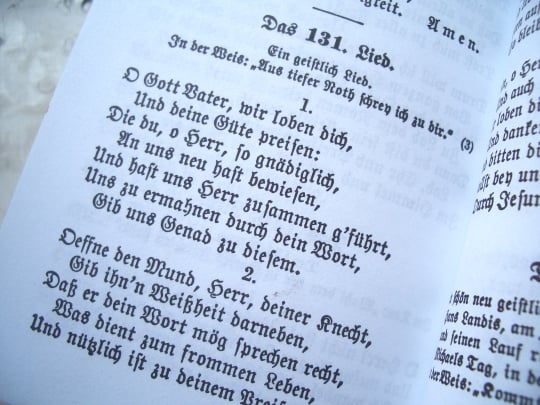
Why page 770? This is where you find the Lob Lied, the best-known of Amish hymns and the one sung second at Amish church services. The hymn has been described as “a prayer for the ministers” by a member of this community. The actual procedure of selection can vary in different communities, but follows a similar general format.
4. Amish families are big – That’s not really a groundbreaking piece of information. But Monroe’s family gives a good example of what a large Amish family looks like – one that expands more and more rapidly as the patriarch and matriarch get up in years. At the time this was posted, Monroe and Susie had 16 children, 98 grandchildren, and 96 great-grandchildren.
Reading that brought to mind an old post “How do Amish keep track of their grandchildren?” When you have close to 200 grands & great-grands, that means another birthday every day or two.
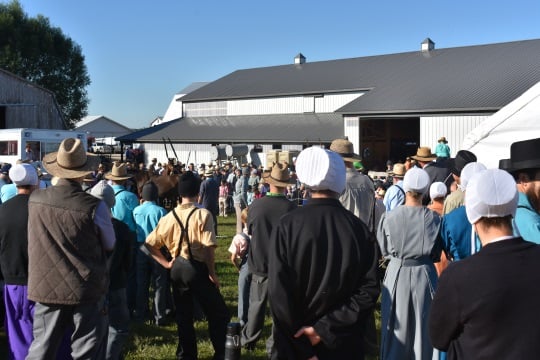
Coming from a family of just 2 children, I have always wondered if children in these larger families feel a want for attention from their parents.
I am going to guess they don’t suffer for that as much as we might think, if at all. Parental attention is certainly supplemented by that of aunts, cousins, brothers, and other family members.
5. Singing youth groups – After the anti-Rumspringa billboard appeared outside Shipshewana, I wondered about supervised/”singing” groups in northern Indiana.

Were they as common or as backed by parents as they are in comparably large communities in Pennsylvania and Ohio? This is how Monroe describes it:
“You know children, they’re all different, and we got some that like to go out and test the things out there, see what’s out there. But we got great big groups, like 200 in a group that get together some evenings. And they come for supper and the neighborhood comes together and helps furnish the supper. They eat, they sing, and then they go home. Then [there’s a] group that we call the wild group, I guess. They got cars, and they go out and… We feel it’s so dangerous to play with that, but sometime they come back.”
I would be curious to know how many are actually a part of the supper & singing groups vs. the “wild groups”. There is no indication of that here. Like with non-Amish youth, Amish adolescent experiences can vary widely.
Irvin adds that of the wild ones, “Most of them come back, and they actually say there’s not anything satisfying out there.” Though, Susie admits, “sometimes you just have to leave them go.”


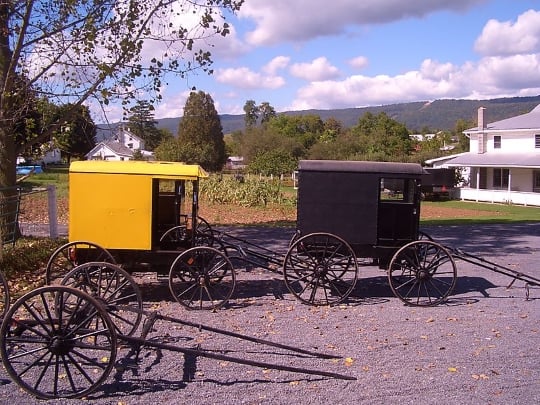
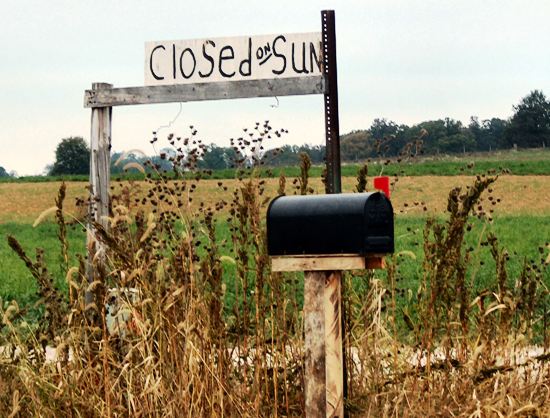

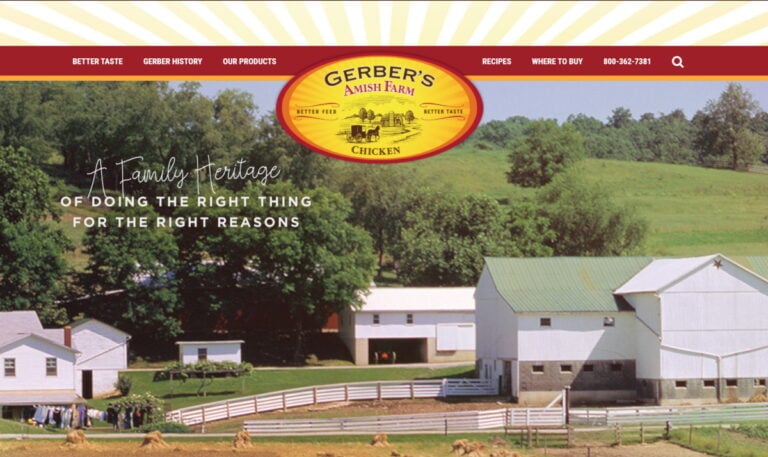
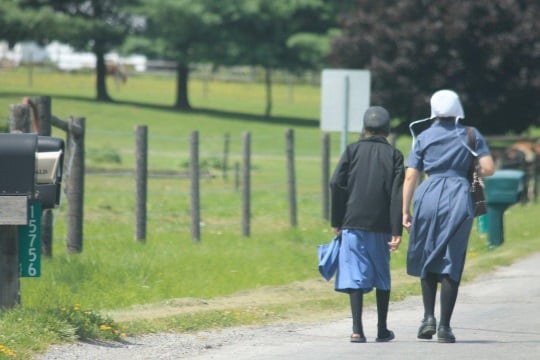
already signed up
supposed to already signed up
Numbers at Supper & Singing
I went, last year to a supper & singing and there were close on 80 people there. Not in Indiana, though, but in Holmes County.
Large Families
My mother was #12 of 15 children. Born in 1928, she died in 2012. She loved her big family and never remarked about feeling neglected by her parents. She always felt sorry for an only child or small families because there would be no one to play with, do chores with, talk to, pal around with. That was the beauty of a large family for her, she was never lonely for companionship or bored from nothing to do.
Only child
I agree only child is no fun. It runs in my family to be only child plus not growing family make me sad. I wait on my only child to have children… do not want only child. It pretty hurt..,
Retired Law field -
Hi, I’m amazed how interconnected the Amish seems to be and the number of children in a family unit. While it is a lot of work for the parents to provide and keep up with all the needs of such large families, I certainly admire the cohesiveness that appears to prevail.
I am the last of 5 children in my family and there was quite an age difference between myself and my siblings. They were practically grown by the time I arrived on the scene. It was their children, (my nieces and nephews), who were like brothers and sisters to me. We were always close and they ranged from 2, 4, 6, and 8 years younger than me. However, unlike the Amish my siblings lived a long distance from my mother and I so our visits were few and short, except during the holidays! We all looked forward to being together…to their staying over the weekend. Sometimes I was allowed to go home with them and stay a week. Oh, what fun we children had together…roller skating, jumping rope, playing marbles and pick-up-sticks. It seemed the days flew bye so quickly.
All my sisters and my brother are in heaven now, as is my beloved mother. My nieces and nephews all live in other states and seldom see one another. However, I have so many wonderful memories of them and all we shared together.
There could be many reasons that your parents only have you but never forget that they love you with all their hearts and feel blessed to have you. Things may not be ‘just as you’d like them to be’ but isn’t it wonderful to have a safe home where love abides? So many children today are homeless and many are unwanted. Be grateful and thank God for what you have been given.
May you and your family have a wonderful Christmas and a healthy, happy New Year filled with joy.
Sincerely,
Jayne
That’s great. It would be near impossible to be lonely in a family of 15 children!
Shipshewana
I visited Shipshewana for a few days in October. I found it to be a very different vibe from the Amish/Mennonite communities I’ve visited many times in Holmes & Lancaster counties, as well as here in NY. I couldn’t put my finger on it exactly, so it’s hard to describe. I know I have NEVER seen as much concentration of buggies anywhere. My goodness they were flying everywhere!!! And Yoders meat & cheese shop is over the top impressive on so many levels. I hope to visit MANY more times to get to know it better.
Paula when you go back I’d recommend visiting the town of Topeka and also Emma (which is basically just an intersection). Slower pace but very much an “Amish” town.
#4 Amish Families are BIG
Erik,
My Grandmother was #4 of 17 children born in 1918 on a large farm in Canada. She detested being the oldest girl and having a big responsibility at an early age. She wanted to be a dressmaker, but her Father insisted she home school her younger siblings. First chance she got, and with the sanction of her Mom [my great Grandmother], two of her older brother’s, my grandmother, and a younger brother #5 and a younger sister #6 left for the USA, and never looked back. My Grandmother at age 17 worked in the garment district in Manhattan, saved her money, and opened up her own dress shop in 1947. She also never thought two parent’s could raise so many children without at least half being compromised.
Two Amish families here have 14 children each – one family is organized and they all seemed to thrive on the family unit. The other family always seems inundated with life, haphazard, and behindhand. Another Amish family had thirteen children – a girl, then three years later three sets of twins in succession in four years. At some point, the Amish community set up a schedule to help. Then this Amish woman went on to have three more children. Most of the Amish families have six to nine children in this area. Amish feel all is right in the world with large families. They feel children are gifts from God, and having many children honors God.
Not sure why my Grandmother felt the way she did, there was no TV, no Internet, and one radio in their massive farm house. I just think she was born independent and that her life was hers. Her parent’s were devout Catholics, and so was my Grandmother all her life who had five children, and a dresshop.
Interesting story about your grandmother. I suppose it is subjective to an individual’s experience. An introvert or low-communicative personality might find all the people constantly around to be stifling and tiring. Not to mention the older ones carry a larger burden in helping, which it sounds like your grandmother experienced.
Good examples of the contrast in families. People and families are different and “run” differently and this probably contrasts with the impression some might have that Amish families and communities always run like clockwork.
I’m baffled by three sets of twins in a row, but I suppose some people are predisposed to that happening more than others.
Behindhand. You taught me a new word today.
Crofton Kentucky
There was an Amish man arrested for molesting 12 children in Crofton Kentucky what is being done about it
Jo, there was recent discussion on another thread on this sight concerning this topic: Report Highlights 50+ Sexual Abuse Cases In Amish Communities Over Two Decades. It might help answer your question to post it there. Sometimes I’ve had difficulties finding recent discussions once they are dropped for a few days. If anyone knows how to find these quickly, please share how.
Here is the link to sexual abuse discussion:
https://amishamerica.com/report-highlights-50-sexual-abuse-cases-amish-communities-two-decades/comment-page-1/#comment-667117
Following recent discussion threads
Stephanie good that you asked – as far as tracking recent discussions, this link will show you the 25 most recent comments -https://amishamerica.com/25-most-recent-comments/
I’ll also add it to the sidebar, we used to have it there but I think it came down in an update. Thanks for bringing it to my attention.
No lack of love or attention
On our last visit to our friends in Illinois, the eldest daughter, who is a mother herself now, told us that she warned her brothers and sisters constantly that they were spoiling her son because he never hit the floor, before someone else was carrying him around. I laughed and asked her why she didn’t make them stop, she told me that he would grow out of being spoiled. I have always contended that you cannot over love a young child. Also, we have never seen or heard of the wilder groups of youth being a problem though it could happen without us hearing. Kids will be kids, true enough, but I hate to see the youth lured away from the tight knit family bond that they have in their Amish home, to trade it for bright lights, and fast cars. I know some that have left, and profess that they are happier, but I always wonder. The Amish I know seem to be the most contented group of people I have ever known. Thanks for the great articles!!
Good thoughts Jeffrey, thanks! I wonder how old children need to be before it’s hard for them to grow out of being spoiled:)
Interesting that you ask about the age. The youngest daughter of our friends was just as spoiled as the new grandson, and for the same reasons. She is 6 now, and I noticed how much more mature and responsible she was on our last visit. She was doing the dishes when told, cleaning up the table, and she had a penchant for keeping the living room clean. Now, she was still spoiled, and precocious, but it was obvious that she will mature and become just as fine a young lady as her sisters.
Town of Topeka
Eric is so right Topeka is a nice little town. Be sure to stop at the restaurant called Tiffany. Great food!
rumspringa or not
had a discussion with a mennonite friend of mine i said join the church the go do the rumspringa thing if ya have to as far as the abuse mentioned in the comments what in the world are they still doing in an amish community just my thoughts on this topic